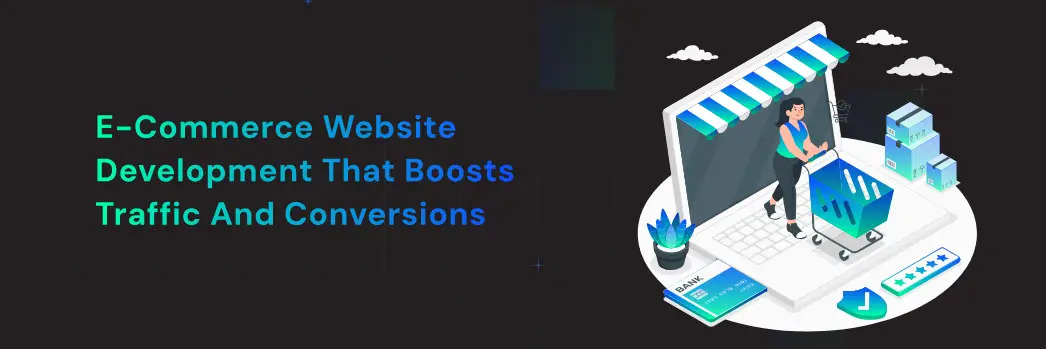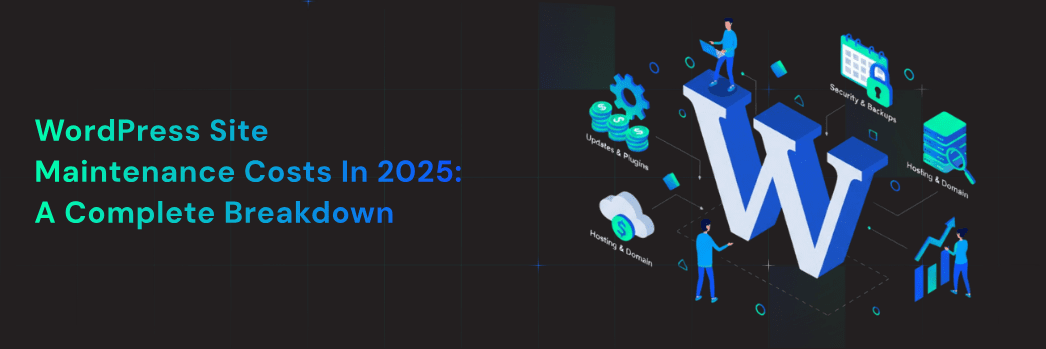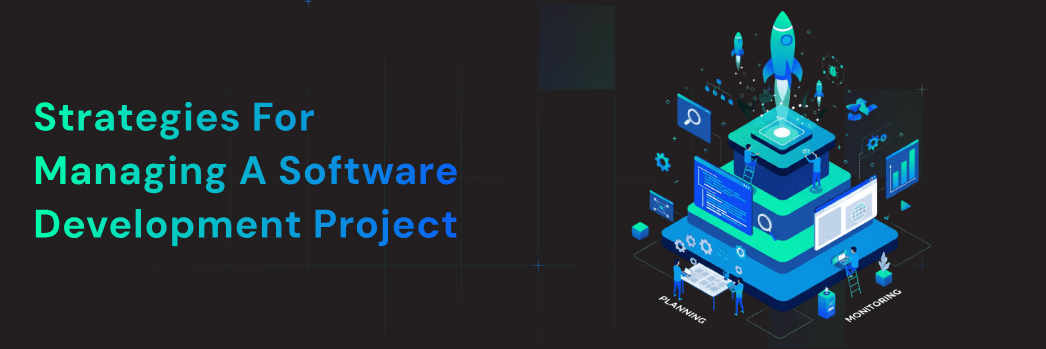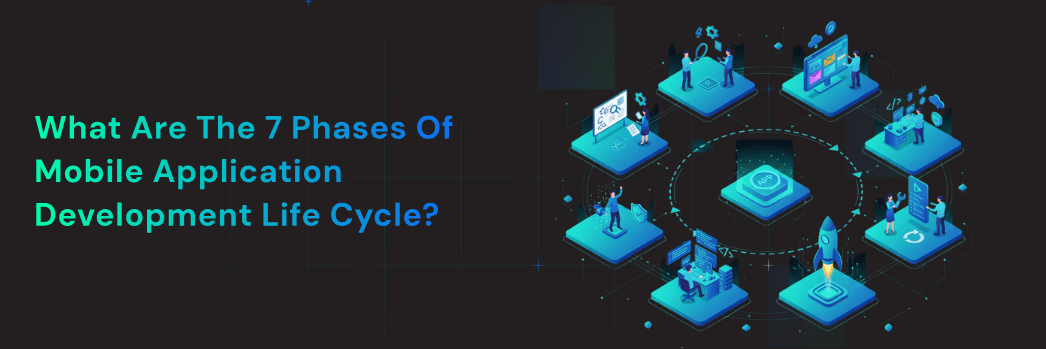An e-commerce website is a vital component of a brand’s expansion; it’s more than just an online store. It is no longer sufficient to merely “have” a website, as competition is becoming more intense every day. Companies want a platform that draws users in, engages them with smooth experiences, and eventually turns them into satisfied customers. This is where developing a strategic e-commerce website is important.
Every element of your online store, from technological optimization to design aesthetics, should be optimized for profitability, performance, and visibility. Let’s explore how developing an e-commerce website with the proper strategy can increase your company’s traffic and conversions.
The process of creating a website establishes the framework for how consumers view your company and engage with your offerings. Visitors will leave your website before completing a purchase if it is sluggish, difficult to use, or visually dated. You only have a fraction of a second to grab a shopper’s attention because research indicates that first impressions of a website are formed in 50 milliseconds.
There is much more to good e-commerce development than just writing code. It includes:
- User Experience (UX) design that makes browsing and buying effortless.
- Performance optimization to ensure fast load times.
- Mobile responsiveness so your store works perfectly on all devices.
- Search engine optimization (SEO) to improve discoverability.
When taken together, these components contribute to a rise in traffic (by drawing in more visitors) and conversions (by converting visitors into paying customers).
The first significant decision in the creation of an e-commerce business is the platform you choose. Well-known choices like BigCommerce, Magento, WooCommerce, and Shopify each have special advantages. BigCommerce offers scalability without requiring a lot of technical management; Magento offers strong customization for large-scale businesses. WooCommerce connects well with WordPress for content-driven stores, and Shopify is renowned for its simplicity and speed of setup.
Your budget, technical requirements, and business objectives will all impact the platform you choose. An established shop would need a custom-built system with advanced inventory management and multi-channel sales integration, whereas a startup might prefer low-cost, template-based solutions.
Reliability has a crucial role in e-commerce. Customers cannot physically touch items; thus, the design of your website must convey professionalism and credibility. This calls for the use of crisp product photos, lucid explanations, and recognizable branding.
The design should discreetly direct the visitor toward completing a purchase. There should be obvious calls to action on important sites, including the homepage, category pages, and product detail pages. In addition to being contemporary, a clear, uncluttered interface eases visitors’ cognitive burden and facilitates decision-making.
Conversions are also influenced by color psychology. Bright colors like orange or red, for instance, can increase the urgency of a sale, but cooler hues might work better for expensive or luxury goods. When combined with thoughtful typography and the visual structure, the appropriate color scheme can gently persuade people to act.
More than half of online shopping now happens on mobile devices. If your website isn’t mobile-friendly, you’re not just missing out on potential customers—you’re actively pushing them away.
Designing and optimizing your website for smaller devices before making the necessary desktop adjustments is known as mobile-first development. This guarantees that consumers on smartphones and tablets have a seamless experience with navigation, product browsing, and checkout. Customers may make purchases more easily while on the go thanks to features like click-to-call buttons, mobile-optimized pictures, and simplified forms.
Optimizing for mobile increases traffic and conversions since Google gives preference to mobile-friendly websites in search rankings.
No matter how beautiful your e-commerce website is, it won’t matter if it takes too long to load. Studies show that every second of delay in page load time can reduce conversions by up to 7%. Slow-loading websites also have higher bounce rates, meaning visitors leave before engaging.
Performance optimization techniques include compressing images without losing quality, using caching solutions, minimizing code files (CSS, JavaScript), and choosing a reliable hosting provider. Integrating a Content Delivery Network (CDN) can also speed up load times for visitors in different geographic locations.
A fast, responsive website not only keeps users happy but also boosts your SEO rankings—helping attract more organic traffic.
Search Engine Optimization (SEO) isn’t just about keywords; it’s also about how your website is structured and developed. From the way URLs are formatted to how quickly your pages load, search engines take multiple technical factors into account.
An SEO-driven e-commerce development strategy includes:
- Optimizing product pages with targeted keywords in titles, descriptions, and meta tags.
- Structuring site navigation so search engines can easily crawl and index your pages.
- Implementing schema markup for rich snippets in search results.
- Ensuring secure connections with HTTPS for customer trust and better rankings.
When SEO is integrated into the development process from the start, your website is more likely to rank higher, draw in organic visitors, and convert them into buyers.
Cart abandonment is one of the biggest challenges in e-commerce. A complicated or lengthy checkout process often discourages customers from completing their purchases. Simplifying this process can significantly boost conversions.
Key strategies include offering guest checkout options, minimizing the number of form fields, providing multiple payment methods, and clearly displaying shipping costs upfront. Integrating trusted payment gateways like PayPal, Stripe, and Apple Pay can also improve customer confidence.
Modern e-commerce websites can go beyond basic storefront functionality. Features like AI-powered product recommendations, real-time inventory tracking, and personalized marketing pop-ups can enhance user experience and increase average order value.
Other valuable integrations include live chat support, customer reviews, and loyalty programs. These elements create a sense of connection with the customer, encouraging repeat purchases and word-of-mouth referrals.
Building the website is just the first step. Ongoing tracking and optimization are essential for sustained success. Tools like Google Analytics and heat mapping software help you understand user behavior—where they click, how long they stay on each page, and where they drop off in the buying process.
This data enables you to make informed adjustments, from refining your SEO strategy to improving product descriptions or reworking your checkout flow. Continuous improvement keeps your site competitive in an ever-changing market.
As technology evolves, so do customer expectations. Features like voice search, augmented reality product previews, and AI-driven personalization are becoming increasingly common in leading e-commerce platforms. Businesses that adopt these innovations early can stand out in crowded markets and deliver experiences that keep customers coming back.
Sustainability is also becoming a significant factor in consumer choices. Highlighting eco-friendly practices in your website’s design and messaging can resonate with conscious shoppers and strengthen brand loyalty.

E-commerce website development is more than building a functional online store—it’s about creating a high-performing digital asset that attracts visitors, builds trust, and drives consistent sales. By focusing on user experience, mobile-first design, site speed, SEO, and streamlined checkout, businesses can develop platforms that not only bring in more traffic but also convert that traffic into loyal customers.
Brands that view their websites as dynamic, ever-evolving instruments for expansion are the ones that succeed in a competitive market. Your e-commerce store can become a revenue-generating powerhouse that supports your business today and grows with the times with the correct development strategy.
Search
Recent Post
- WordPress Site Maintenance Costs in 2025: A Complete Breakdown
- Strategies for Managing a Software Development Project
- What Are the 7 Phases of Mobile Application Development Life Cycle?
- Advantages of Swift Language: Why Should You Build an iOS App with Swift?
- Node.js vs. React.js: Which JavaScript Technology Should Developers Choose?
- UI/UX Design Services – Expert Solutions for Web & Mobile Apps
Categories
- Blog (43)
- Mobile App (7)
- option1 (1)
- option2 (1)
- WordPress (2)




